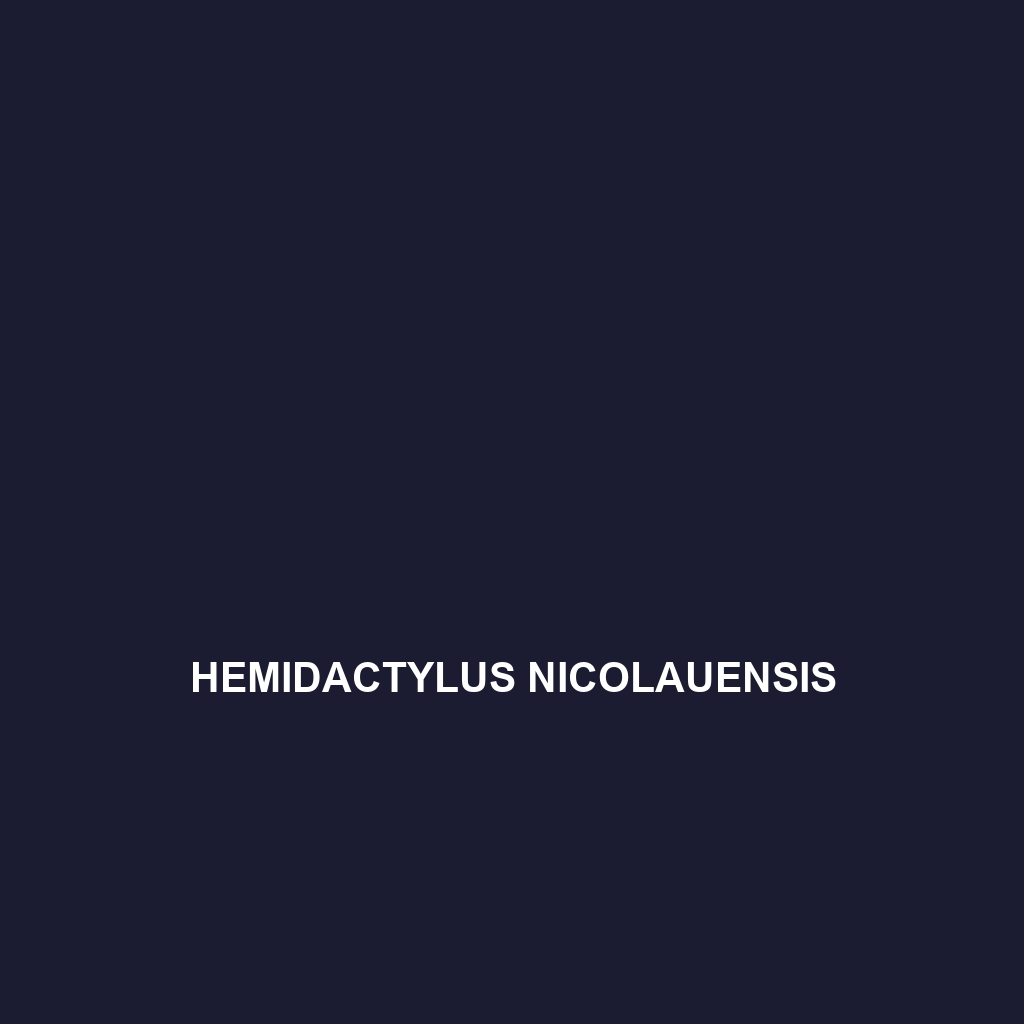Common Name
Hemidactylus nicolauensis
Scientific Name
Hemidactylus nicolauensis
Habitat
Hemidactylus nicolauensis, commonly known as the São Nicolau gecko, is predominantly found on the island of São Nicolau, part of the Cape Verde archipelago. This species prefers dry forests and savannas that offer adequate shelter and abundant food sources. The island’s unique geographical and climatic conditions, characterized by a warm, subtropical climate with seasonal rainfall, create an ideal environment for this gecko. Rainforests with dense vegetation pockets also provide optimal nesting areas, while rocky outcrops offer rest spots, making it a resilient species adapted to the island’s characteristics.
Physical Characteristics
Measuring approximately 10 to 15 centimeters in length, Hemidactylus nicolauensis displays a slender body shape typical of geckos. Its skin is adorned with a mix of muted browns, greys, and occasional dark spots, which serve as effective camouflage against the rocky and sandy terrains of its habitat. Notable physical features include large, distinct eyes with a horizontal slit pupil, which enhance its night vision, as the species is primarily nocturnal. Additionally, their toes possess specialized pads that facilitate climbing on various substrates, showcasing their adaptation to arboreal life.
Behavior
Hemidactylus nicolauensis exhibits intriguing behavioral patterns that enhance its survival in the wild. Being predominantly nocturnal, this gecko is active at night, foraging for food while avoiding predators. Social interactions are minimal, with most individuals maintaining solitary territories. However, during the mating season, males can often be observed displaying courtship behaviors, which may include head-bobbing or vocalizations to attract females. The gecko is known for its agility and quick reflexes, with an ability to drop its tail when threatened—an effective escape mechanism that also serves to distract would-be predators.
Diet
Hemidactylus nicolauensis is primarily insectivorous, feeding on a varied diet that includes crickets, moths, and other small invertebrates. Their nocturnal hunting habits allow them to take advantage of the abundance of insects drawn to nighttime lights. This species utilizes its keen vision and swift agility to capture prey, hunting primarily on the ground and climbing surfaces, aided by their adhesive toe pads, which enable them to navigate complex environments quickly.
Reproduction
The reproductive cycle of Hemidactylus nicolauensis typically peaks during the warmer months when food availability is high. Mating often occurs during twilight hours, initiated by male displays to attract females. After successful mating, females lay one or two eggs per clutch, which are deposited in hidden locations to avoid predators. The incubation period lasts approximately 30 to 40 days, depending on environmental conditions. Newly hatched geckos are independent from birth, capable of hunting and fending for themselves right away, displaying an adaptive reproductive strategy that increases juvenile survival rates.
Conservation Status
As of the latest assessments, Hemidactylus nicolauensis is classified as Least Concern on the IUCN Red List. However, its population is threatened by habitat loss due to agricultural expansion, urban development, and the introduction of invasive species. Conservation efforts are ongoing to monitor the population and protect its natural habitat. Local initiatives aim to promote sustainable land-use practices that can facilitate the coexistence of human activities and wildlife conservation.
Interesting Facts
One fascinating aspect of Hemidactylus nicolauensis is its remarkable ability to change coloration slightly based on its surroundings, enhancing its camouflage. Additionally, unlike many other gecko species that rely on vocalizations for communication, this species primarily utilizes body language and physical displays, making it unique within its genus.
Role in Ecosystem
Hemidactylus nicolauensis plays a pivotal role in its ecosystem primarily as a predator of insects, helping to regulate insect populations. In turn, it serves as a food source for various predators, including birds and larger reptiles. By maintaining the balance of the food web and contributing to pest control, this gecko illustrates the importance of biodiversity in ecosystem stability. Its interactions highlight the interconnectedness of species in the unique habitats of the Cape Verde islands.
